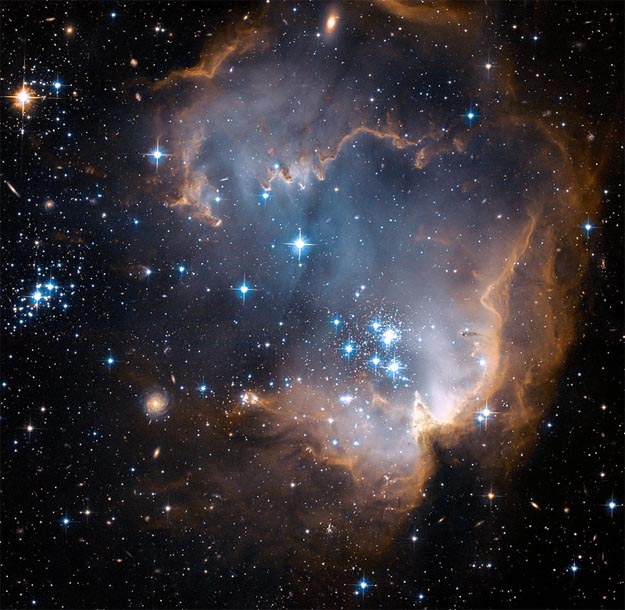| |
The Universe has not stopped growing
New stars and planets are continually being formed and destroyed.
With the Hubble telescope, we can see bright, blue, newly-formed stars in the center of a star-forming region in what astronomers call the Small Magellanic Cloud. It is part of the small galaxy NGC 346, near the Milky Way.
In space, “near” is still very far away. This colourful grouping of stars is roughly 200,000 light-years from the Earth.
What is a light-year?
Light travels very fast, (186,000 miles per second or 299,792 kilometers per second) and the light from these stars took 200,000 years to get here. That is one way of saying these stars are very, very far away!
Is space really this colourful?
These new stars really do give off a bluish light. Filters used to make the pictures clearer also make the colours brighter and bolder, which makes the picture more dramatic.
Image credits for this page:
Small Magellanic Cloud: NASA
Please read: About images and copyright.
|
|
 |
|
M Y  P L A C E P L A C E  I N I N  T H E T H E  U N I V E R S E U N I V E R S E

|

